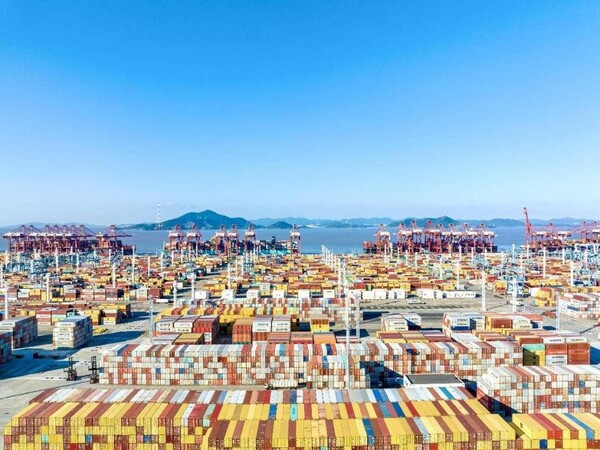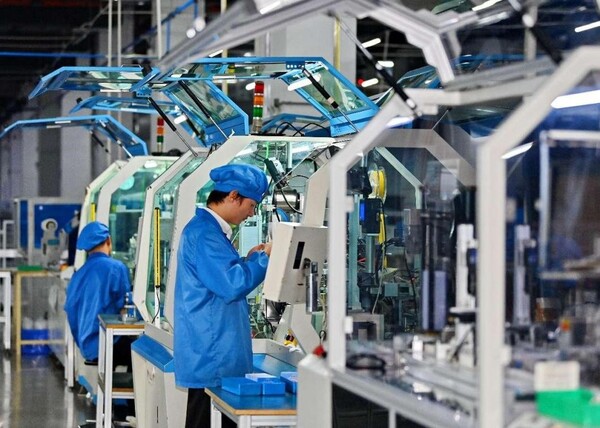By Yang Yi, People's Daily
The economic growth of the Asia-Pacific region is expected to reach 4.6 percent this year, up from 3.9 percent in 2022, according to the Regional Economic Outlook for Asia and Pacific recently released by the International Monetary Fund (IMF).
The report said that "economic activity in Asia and the Pacific remains on track to contribute about two-thirds of global growth in 2023."

In a recent Asian Development Outlook report, the Asian Development Bank (ADB) forecasted that the region's developing economies will grow 4.7 percent this year.
Against the backdrop of a sluggish recovery of the world economy this year, the Asia-Pacific region has shown resilience and vitality, with continuous progress made in regional cooperation.
The Asia-Pacific region accounts for one-third of the world's population, over 60 percent of the world's economy, and nearly half of global trade. Experts said that the Asia-Pacific region boasts rich production factors, a huge market size, diverse resources, and strong economic complementarity.
Currently, market demand in the region is gradually recovering, the tourism industry is rebounding rapidly, and consumption is showing resilience. Inflationary pressures in some countries in the region are decreasing.
The Pacific Asia Travel Association recently estimated that by the end of 2023, the number of international tourists visiting the Asia-Pacific region is expected to exceed 516 million, reaching approximately 76 percent of the pre-pandemic level in 2019. By 2024 and 2025, the number is projected to increase to 107 percent and 116 percent of the pre-pandemic level, respectively.
The Asia-Pacific region is a pioneer and a demonstration area for promoting digitalization and developing the digital economy. According to a recent forecast by International Data Corporation (IDC), the digital economy is expected to contribute 65 percent of the overall economic output of the Asia-Pacific region in 2023, and businesses in the region are anticipated to generate 43 percent of their revenues from the digital economy chain.

Experts believe that digitalization is reshaping the Asia-Pacific economy, and the region is facing opportunities for digital transformation.
In addition, the IMF predicted that inflation for most Asia-Pacific economies would fall within central bank targets by the end of 2024, earlier than the rest of the world.
In June this year, the Regional Comprehensive Economic Partnership (RCEP) agreement came into effect for all its 15 members, entering a new phase of comprehensive implementation. According to the agreement, over 90 percent of trade in goods within the region will eventually be tariff-free.
This will make trade relations smoother and closer among member countries, further promote trade and investment liberalization and facilitation in the Asia-Pacific region, and enhance the region's intrinsic momentum for economic growth.
With the signing of the RCEP, the dividends are gradually released. As the construction of the China-ASEAN Free Trade Area advances, the industrial and supply chain cooperation between the two sides, based on complementary advantages, has continuously been strengthened.
Bilateral trade volume between China and ASEAN reached over $970 billion last year, and they have been each other's largest trading partners for three consecutive years.
The negotiations on Version 3.0 China-ASEAN Free Trade Area were launched earlier this year, which would further reduce tariff and non-tariff barriers and promote regional economic integration.
Krishna Srinivasan, director of the IMF's Asia and Pacific Department, noted that implementing the RCEP has bolstered economic diversity across the region, integrating more economies and deepening cooperation among regional trading partners. In the long run, the agreement is expected to create a more attractive investment environment and boost regional economic growth.
As one of the most important economies in the Asia-Pacific region, China has enormous potential for economic growth and has made significant contributions to promoting regional economic growth.
According to the ADB's Asian Economic Integration Report 2023, China's contribution to economic growth in the Asia-Pacific region reached 64.2 percent. The country also contributed to 37.6 percent of the region's growth in goods trade and 44.6 percent in services trade.
According to statistics, China's GDP exceeded 91.3 trillion yuan ($12.54 trillion) in the first three quarters of 2023, growing 5.2 percent year-on-year. China's imports and exports with other Belt and Road countries increased by 3.1 percent from the same period last year, accounting for 46.5 percent of its total trade volume.
"The accelerated recovery of the Chinese economy has greatly improved the overall liquidity and consumption performance in the Asia-Pacific region," said Srinivasan. Recent economic indicators showed that both the manufacturing and service sectors of China have entered a path of recovery, a significant sign of China's economic rebound, Srinivasan added.

Aksornsri Phanishsarn, adviser to the Foreign Affairs Committee of the Thai Senate and associate professor of the Faculty of Economics at Thammasat University, said that China's economy boasts numerous promising areas, with rapidly emerging industries and innovative business models, all of which hold immense growth potential. This dynamic landscape serves as a powerful catalyst for economic growth in the Asia-Pacific region, she added.
World Bank Vice President Manuela Ferro said that the growth of the Asia-Pacific region, particularly China's economy, has exceeded expectations. The broad recovery of the Asia-Pacific and global economy this year can largely be attributed to the driving force of China's economy. She believed the region is expected to see a recovery in exports and other related trade in 2024.

